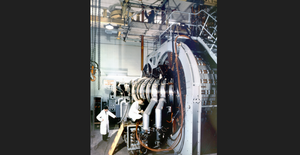Back to the future: ZETA - Britain's sputnik
Thirty years ago, 25 January 1958, the director of Harwell Laboratory in Britain, called a news conference attended by 400 reporters. He announced that a secret, experimental machine called "Zeta" - Zero Energy Thermonuclear Assembly - had produced constant temperatures in a hydrogen gas of five million degrees centigrade. Neutron measurements indicated that thermonuclear reactions were taking place. Zeta had apparently produced the world's first controlled fusion reaction - he was 90 percent sure, he said, under hard questioning. "To Britain, this discovery is greater than the Russian Sputnik."
The "sputnik" in question was Sputnik 1 that had been launched into outer space by the Soviet Union a few months earlier, the first artificial satellite ever to be put into space and a huge media triumph for the Soviets. This was the Cold War era and British newspapers were quick to trumpet this national success: "The Mighty Zeta"..."Limitless Fuel for Millions of Years".
Just a few months later hopes were dashed. It was shown that the neutrons supposed to be present had been produced by the hot, wriggling gas in the torus escaping the surrounding magnetic fields and touching Zeta's metal casing.
Research on a different version of the pinch machine is still going on. The research even hit the film screens in Ocean's Eleven (2001), when a "pinch" is stolen and used to disrupt power in Las Vegas. In practice this wouldn't have worked of course...


